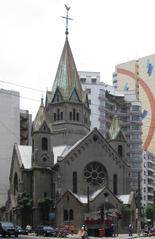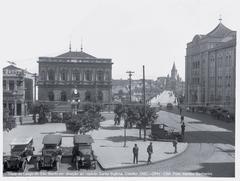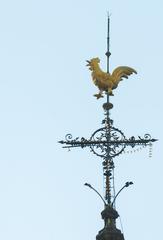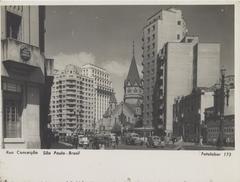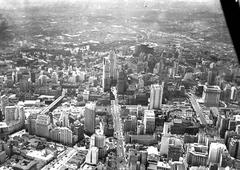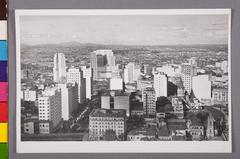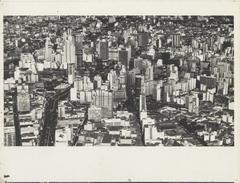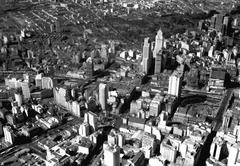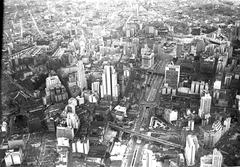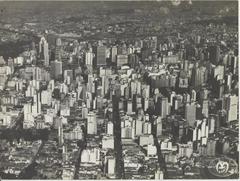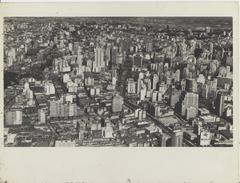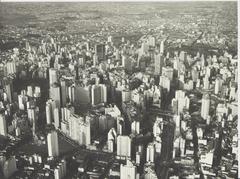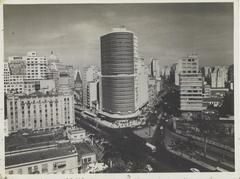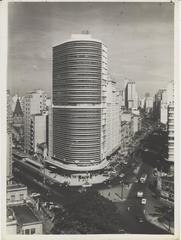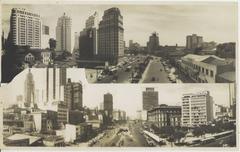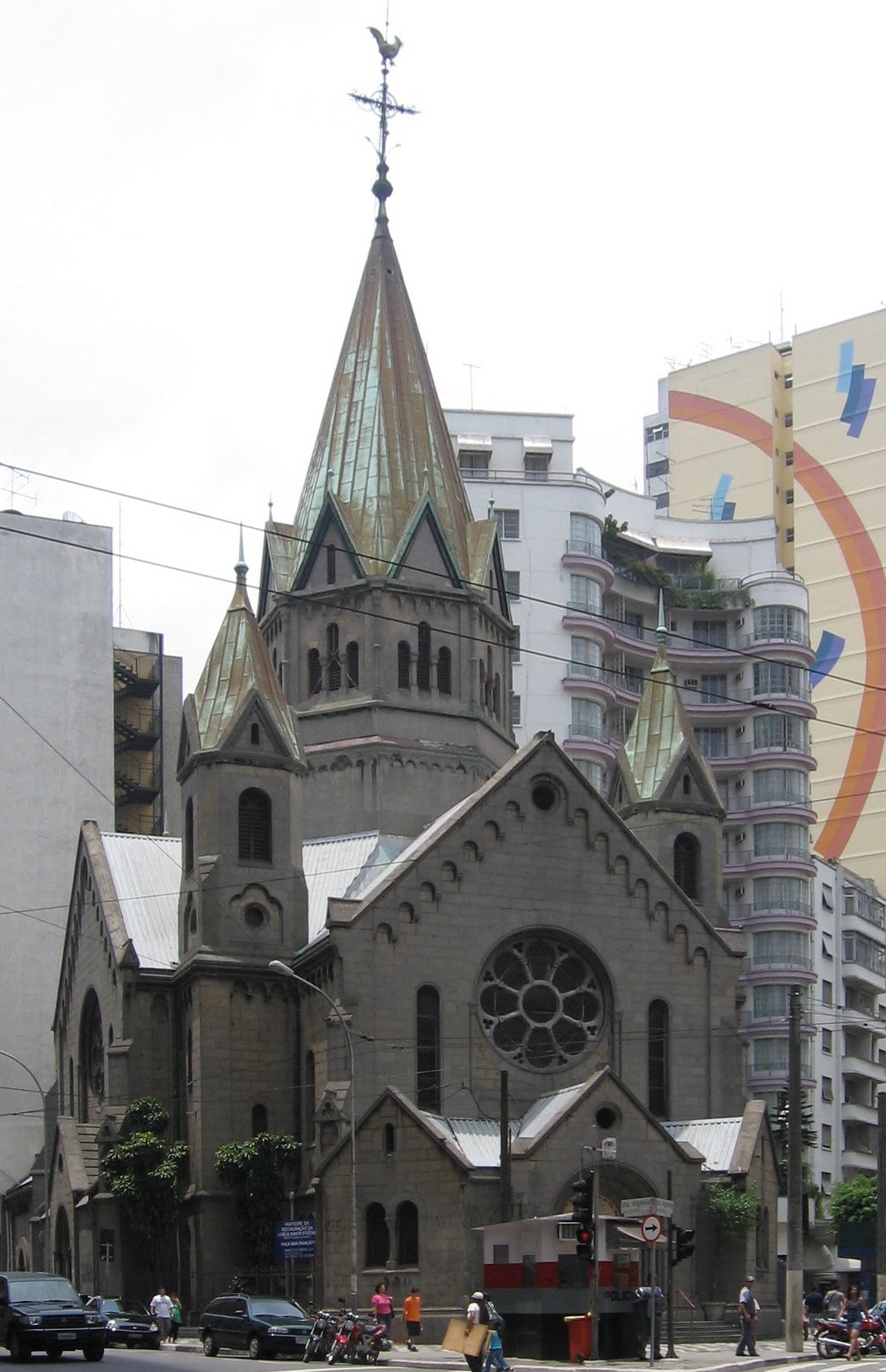
Basilica of the Most Blessed Sacrament: Visiting Hours, Tickets, and Travel Guide to São Paulo’s Historic Landmark
Date: 14/06/2025
Introduction
The Basilica of the Most Blessed Sacrament (Basílica do Santíssimo Sacramento) stands as one of São Paulo’s most significant religious and cultural monuments. Located in the vibrant heart of the city, this basilica is both an architectural treasure and a living center of faith, community, and history. Whether you are a pilgrim, architecture enthusiast, or traveler eager to explore São Paulo’s rich heritage, this guide provides everything you need to plan a rewarding visit, including detailed historical context, architectural highlights, practical visiting information, and travel tips.
Table of Contents
- History and Foundation
- Architectural Evolution and Features
- Cultural and Religious Significance
- Visiting Hours, Tickets, and Accessibility
- Guided Tours and Visitor Experience
- Nearby Attractions and Urban Context
- Practical Travel Tips
- Frequently Asked Questions (FAQ)
- Conclusion and Recommendations
- References
History and Foundation
The Basilica’s roots trace back to São Paulo’s early Jesuit missions in the 16th century, symbolizing the city’s enduring Catholic heritage. Initially established as a chapel in the early 1700s, the site gained parish status in 1809 under Prince Regent Dom João VI, evolving alongside São Paulo’s transformation from a mission outpost into a major urban center. Over the centuries, the basilica has mirrored the city’s social changes and spiritual aspirations, becoming a testament to faith, resilience, and community identity.
Architectural Evolution and Features
The basilica is a splendid example of São Paulo’s layered architectural history. Its exterior displays a synthesis of neo-Gothic, neoclassical, and baroque influences, with pointed arches, imposing bell towers, and ornate stonework. The facade’s symmetry and decorative details offer a striking approach, especially from the Santa Ifigenia Viaduct.
Inside, visitors are welcomed by a traditional Latin cross layout, vaulted ceilings, vibrant stained glass windows, and intricately crafted altars. Artistic highlights include a richly adorned main altar, side chapels dedicated to saints, and a harmonious interplay of light and color through stained glass. The crypt houses the tomb of Chief Tibiriçá, an indigenous leader integral to the city’s founding, reflecting the basilica’s connection to local history.
(ThoughtCo - Architecture Timeline; Touropia)
Cultural and Religious Significance
As a central place of worship, the basilica hosts daily Mass, Eucharistic adoration, and major Catholic feasts, including Holy Week, Corpus Christi, and Christmas. These events draw thousands, transforming the basilica into a vibrant spiritual and cultural hub. Beyond liturgy, it serves as a center for sacred music, art exhibitions, and educational programs, welcoming diverse communities and fostering São Paulo’s multicultural identity.
Marian devotion is especially prominent, with chapels dedicated to Our Lady of the Blessed Sacrament attracting pilgrims seeking intercession. The basilica’s outreach initiatives and interfaith events further promote social harmony and community engagement.
Visiting Hours, Tickets, and Accessibility
- Visiting Hours: Monday to Saturday, 8:00 AM – 6:00 PM; Sunday, 7:00 AM – 7:00 PM (confirm during holidays or special events).
- Admission: Free for all visitors. Donations are appreciated to support maintenance and charitable programs.
- Guided Tours: Available on weekends at 10:00 AM and 3:00 PM. Advance booking via the basilica’s official website is recommended.
- Accessibility: Fully wheelchair accessible, with ramps at entrances and accessible restrooms.
(Fodor’s)
Guided Tours and Visitor Experience
Guided tours offer in-depth insights into the basilica’s history, architecture, and liturgical significance. These tours are ideal for groups, students, and anyone wishing to appreciate the basilica’s artistic and historical treasures. Self-guided exploration is also encouraged, with informational materials available on-site. Respectful photography is permitted (no flash during services).
Nearby Attractions and Urban Context
The basilica is ideally situated in São Paulo’s historic center, allowing for easy access to other notable landmarks:
- São Paulo Cathedral (Sé)
- Mosteiro de São Bento
- Pateo do Collegio
- Theatro Municipal
- Anhangabaú Valley cultural area
Its proximity to public transport, including the São Bento Metro Station, makes it a convenient stop on any cultural itinerary.
(Nannybag)
Practical Travel Tips
- Best Time to Visit: Early weekday mornings for a peaceful atmosphere; major feasts for vibrant celebrations.
- Dress Code: Modest attire recommended; no hats inside.
- Language: Portuguese is predominant; some staff may speak English or Spanish.
- Photography: Permitted, but avoid flash during services.
- Safety: The area is generally safe during the day; remain vigilant and use official transport after dark.
- Amenities: Restrooms, nearby cafés, and shops are readily available. Luggage storage services are accessible for travelers.
Frequently Asked Questions (FAQ)
Q: What are the basilica’s visiting hours?
A: Monday to Saturday, 8:00 AM – 6:00 PM; Sunday, 7:00 AM – 7:00 PM.
Q: Is there an entrance fee?
A: Admission is free; donations are welcome.
Q: Are guided tours available?
A: Yes, on weekends at set times; book in advance.
Q: Is the basilica wheelchair accessible?
A: Yes, with ramps and accessible restrooms.
Q: Is photography allowed inside?
A: Yes, but flash should be avoided during services.
Conclusion and Recommendations
The Basilica of the Most Blessed Sacrament is a beacon of São Paulo’s religious, cultural, and architectural legacy. Its grand interiors, vibrant community life, and central location make it an essential destination for anyone interested in the city’s history or seeking spiritual reflection. Take advantage of guided tours, explore nearby historical sites, and immerse yourself in the basilica’s ongoing role as a center for faith and culture.
For the most current information on visiting hours, events, and travel tips, consult the official São Paulo tourism website.
References
- The History of São Paulo – ThoughtCo
- Architecture Timeline – ThoughtCo
- Local Guide to São Paulo – GoAskALocal
- Religion in Brazil – The Brazilian Guide
- Tourist Attractions in São Paulo – Touropia
- São Paulo Travel Guide – Fodor’s
- São Paulo Safety and Travel Tips – Nannybag
- Basilica of the Most Blessed Sacrament on GCatholic
- São Paulo Tourism Official Site
- Getty Images Basilica Photos
